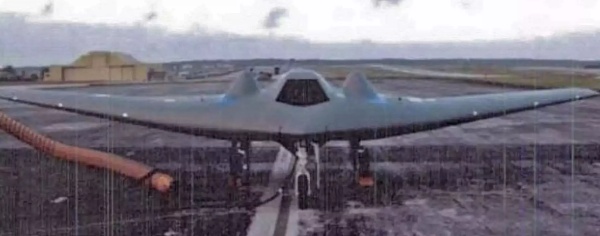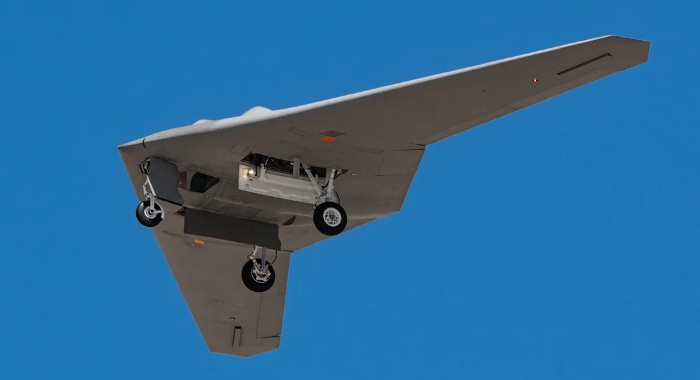Lockheed Martin RQ-170 Sentinel
The RQ-170 Sentinel is a low-observable reconnaissance UAV employed by the U.S. Air Force.
The development of the Sentinel began not long after the terror attacks of 11 September 2001 with a requirement of the Air Force Rapid Capabilities Office (AFRCO) for a stealthy UAV to provide battlefield ISR (Intelligence, Surveillance and Reconnaissance) for forward-deployed combat forces. A development contract was awarded to Lockheed Martin, which could leverage their work on the earlier, company-funded Manta UAV. The result was the P-170 Desert Prowler, a turbofan-powered flying wing with a very low radar cross section. Ground testing of the prototype began in early 2005, and the first flight occurred in December that year.
The P-170 airframe is a blended flying wing without any vertical surfaces. The inlet of the single engine is shielded by a grid similar to those used in the F-117A, presumably because the vehicle is too short to hide the engine face behind a curved inlet. A ventral payload bay can accommodate various gear, incl. electro-optical sensors, side-looking radar and other intelligence-gathering equipment. The prominent dorsal humps near the wing roots contain SATCOM equipment.
 |
| Photo: USAF |
| RQ-170 |
In 2007, the P-170 was deployed to Kandahar Airfield in Afghanistan. Soon after, the aircraft was spotted and photographed there by journalists, but it was not before December 2009 that the USAF publicly acknowledged the existance of the drone. The Air Force quoted the designation of the vehicle as RQ-170 Sentinel. Reportedly, the unofficial nickname "Wraith" is also used for the RQ-170.
 |
| Photo: @AircraftSpots |
| RQ-170 |
The Air Force doesn't publicly discuss the operational missions of the RQ-170, but some information can nevertheless be derived from circumstantial evidence. A deployment in 2009 to Kansan Air Base in South Korea led to speculations, that the RQ-170 was used to gather intelligence connected to the development of ballistic missiles by North Korea. In early 2011, Sentinels from Kandahar gathered key ISR data to support Operation Neptune Spear, the May 2011 raid on Osama Bin Laden's hideout in Pakistan. Afghanistan-based Sentinels were also used for reconnaissance flights in Iranian air space. The latter operations led to an incident in December 2011, when an RQ-170 came down essentially intact on Iranian territory. Iranian Air Force officials claimed that they had intercepted the drone's SATCOM link and taken control of the vehicle, but this claim is most likely false.
Currently, two USAF units operate the RQ-170, the 30th and 44th Reconnaissance Squadrons, both based at Creech AFB. The total number of Sentinel drones built is reported to be between 20 and 30.
Designation Note: The designation RQ-170 is out of sequence in the Q-series, because the number was obviously derived from Lockheed Martin's in-house project number P-170. If RQ-170 is an official MDS, the actual full designation is most likely RQ-170A.
Specifications
Note: The USAF hasn't published any information on the RQ-170's physical characteristics. Figures given below are estimates, and may therefore be inaccurate!
Data for RQ-170:
| Length | 4.5 m (14 ft 9 in) |
| Wingspan | 11.8 m (38 ft 7 in) |
| Height | 1.8 m (6 ft) |
| Speed | ? |
| Ceiling | 15000 m (50000 ft) |
| Range | ? |
| Endurance | 5-6 hr |
| Propulsion | 1 turbofan |
Main Sources
[1] Peter W. Merlin: "Dreamland, The Secret History of Area 51", Schiffer Publishing, 2023
[2] Wikipedia: Lockheed Martin RQ-170 Sentinel
[3] Joseph Trevithick:
Air Force Makes Extremely Rare Mention Of Deployment Of RQ-170 Stealth Drones
Back to Directory of U.S. Military Rockets and Missiles, Appendix 2
Last Updated: 7 January 2024